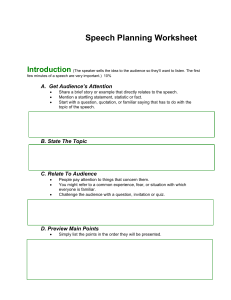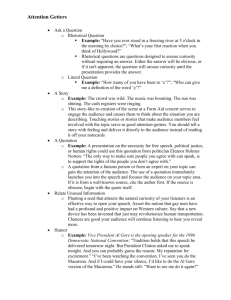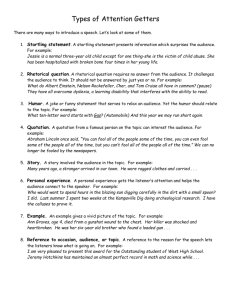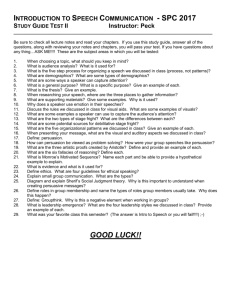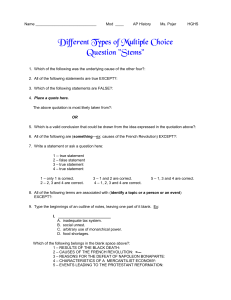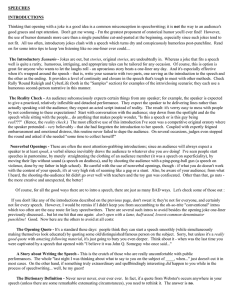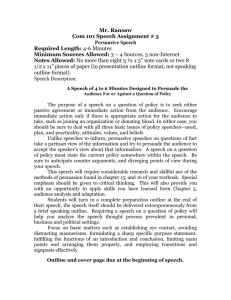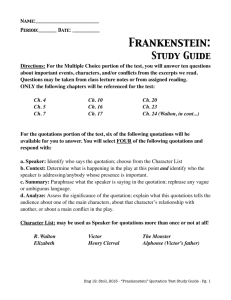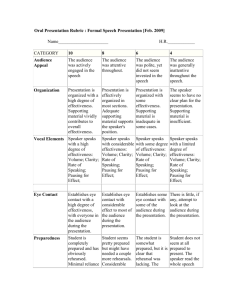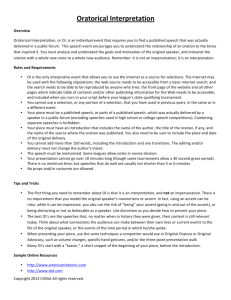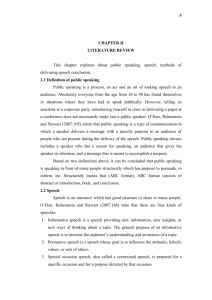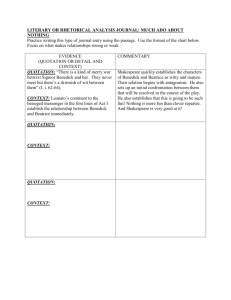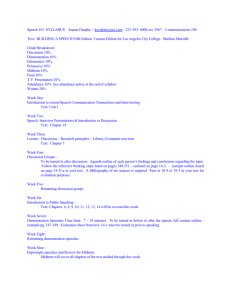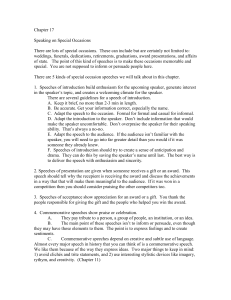Chapter 9 - Ranger College
advertisement
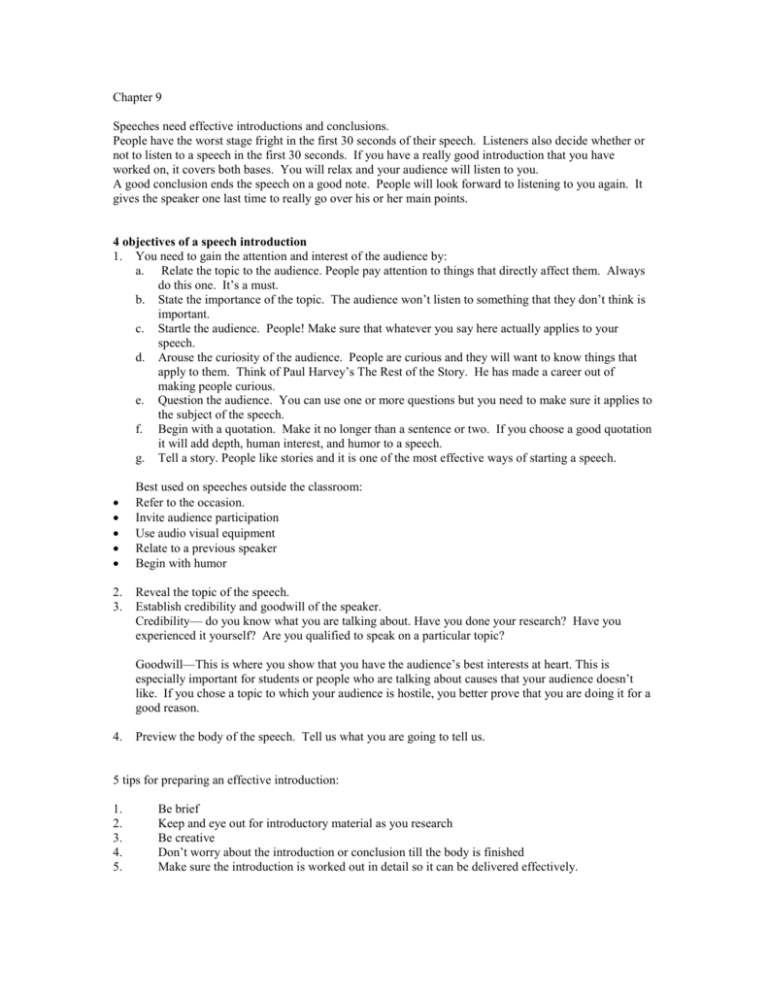
Chapter 9 Speeches need effective introductions and conclusions. People have the worst stage fright in the first 30 seconds of their speech. Listeners also decide whether or not to listen to a speech in the first 30 seconds. If you have a really good introduction that you have worked on, it covers both bases. You will relax and your audience will listen to you. A good conclusion ends the speech on a good note. People will look forward to listening to you again. It gives the speaker one last time to really go over his or her main points. 4 objectives of a speech introduction 1. You need to gain the attention and interest of the audience by: a. Relate the topic to the audience. People pay attention to things that directly affect them. Always do this one. It’s a must. b. State the importance of the topic. The audience won’t listen to something that they don’t think is important. c. Startle the audience. People! Make sure that whatever you say here actually applies to your speech. d. Arouse the curiosity of the audience. People are curious and they will want to know things that apply to them. Think of Paul Harvey’s The Rest of the Story. He has made a career out of making people curious. e. Question the audience. You can use one or more questions but you need to make sure it applies to the subject of the speech. f. Begin with a quotation. Make it no longer than a sentence or two. If you choose a good quotation it will add depth, human interest, and humor to a speech. g. Tell a story. People like stories and it is one of the most effective ways of starting a speech. 2. 3. Best used on speeches outside the classroom: Refer to the occasion. Invite audience participation Use audio visual equipment Relate to a previous speaker Begin with humor Reveal the topic of the speech. Establish credibility and goodwill of the speaker. Credibility— do you know what you are talking about. Have you done your research? Have you experienced it yourself? Are you qualified to speak on a particular topic? Goodwill—This is where you show that you have the audience’s best interests at heart. This is especially important for students or people who are talking about causes that your audience doesn’t like. If you chose a topic to which your audience is hostile, you better prove that you are doing it for a good reason. 4. Preview the body of the speech. Tell us what you are going to tell us. 5 tips for preparing an effective introduction: 1. 2. 3. 4. 5. Be brief Keep and eye out for introductory material as you research Be creative Don’t worry about the introduction or conclusion till the body is finished Make sure the introduction is worked out in detail so it can be delivered effectively. A speech conclusion has two primary functions 1. To signal the end of a speech. Don’t be abrupt. Finish the speech. My personal pet peeve is when someone reaches the end of their speech and says “ that’s it”, shrugs and sits down. It seriously irritates me. Don’t do it. Signal the end with a brief verbal cue. The verbal cue would be something like, “In conclusion” or “One last thought.” Crescendo ending the voice gets louder as it goes on as the speech builds in force. Dissolve ending the words fade away and the voice gets quieter as it goes. 2. To reinforce the audience’s understanding of or commitment to the central idea of the speech. 1. Summarize the main points of the speech. 2. Conclude with a quotation 3. End with a dramatic statement 4. Refer back to the introduction of the speech. These can be used individually or in combination to create an effective conclusion. There are four tips for preparing an effective conclusion 1. Keep an eye out for concluding materials as you research. 2. Conclude with a bang and not a whimper 3. Keep it short. 4. Prepare the content and delivery of conclusions with special care.
